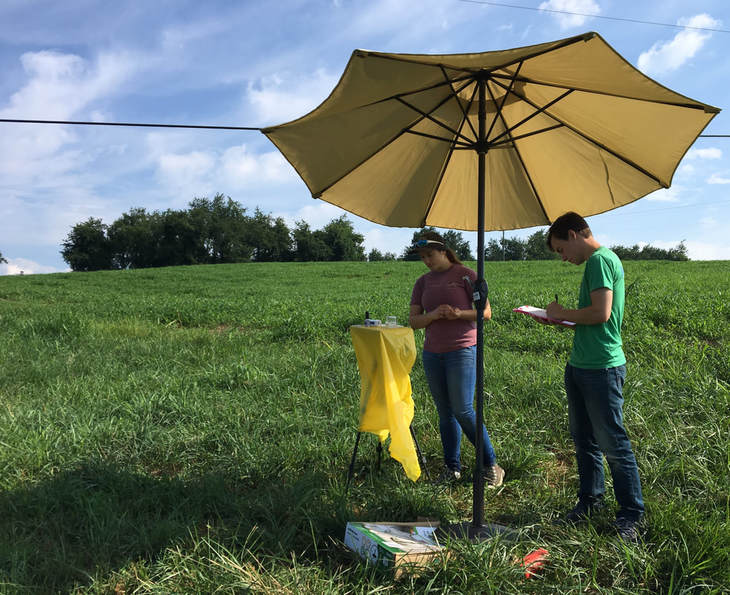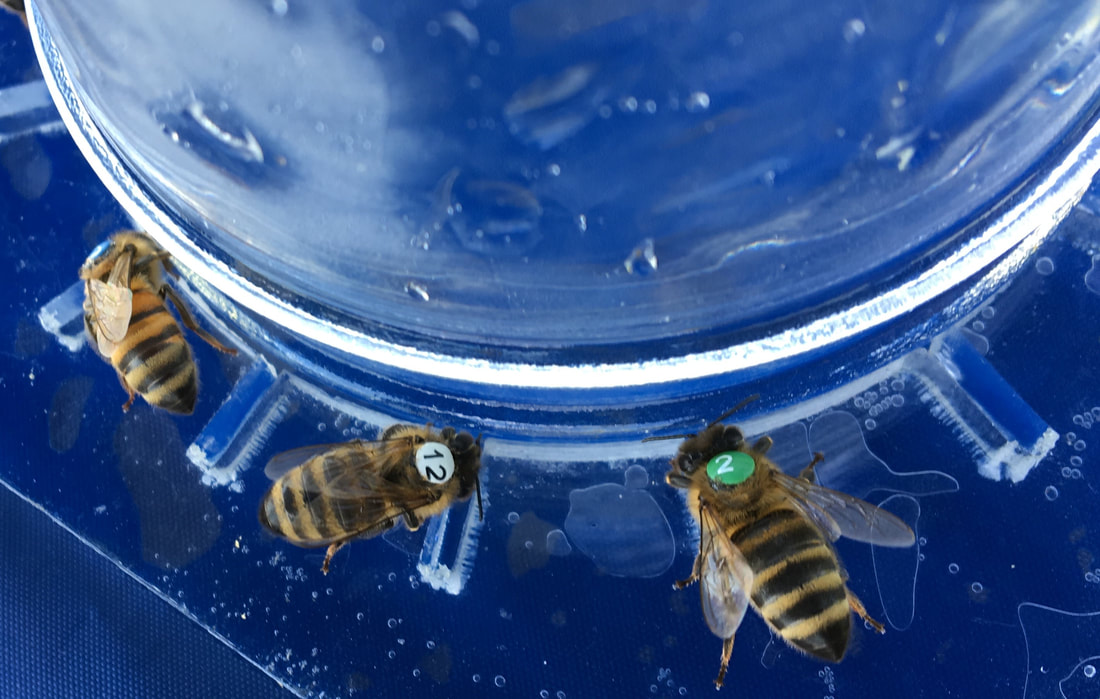 Things have been pretty quiet here in the bee blog for a good reason - July/August is the time of year when we try to squeeze out a feeder experiment. This involves training bees from a hive to forage at feeders in known locations. The feeders are usually on brightly colored tripods, either yellow or blue, and placed under a matching umbrella to provide shade because Virginia in July is hot. Here Brad, who worked this summer as a lab tech and began a Ph.D. this August, records bee visits under the yellow umbrella next to the yellow tripod, upon which is a feeder. Just a few feet away is the blue umbrella / tripod / feeder combo.  During the training process, the bees become marked with individual number tags, like little football player jerseys. The marking is part of the fun and requires a steady hand and an appreciation for the whimsy of seeing honey bees with little number tags. Molly, undergraduate researcher, applies clear nail polish to the thorax of a bee and then places the number tag. The key is to do this without unduly upsetting the bee so that she still associates the feeder with a positive foraging experience.  Once the bees are marked and trained to forage at a designated feeder, we Do Things to them. In particular, for this experiment, after we had trained two cohorts of bees to forage reliably at 2 different feeders, set equidistant from the lab, we exposed one of the cohorts to a treatment (foraging on a chemical within a 1M sucrose solution) while keeping the other cohort as the control group (1M sucrose solution forage).  We tracked a number of metrics during the experiment, and most of them required someone to spend many hours standing by a feeder with a clipboard. Here Molly and Jack, another undergraduate researcher, record foraging visits from marked bees. Science is nothing if not total glamour.
0 Comments
Your comment will be posted after it is approved.
Leave a Reply. |
Archives
September 2019
Categories |

 RSS Feed
RSS Feed
